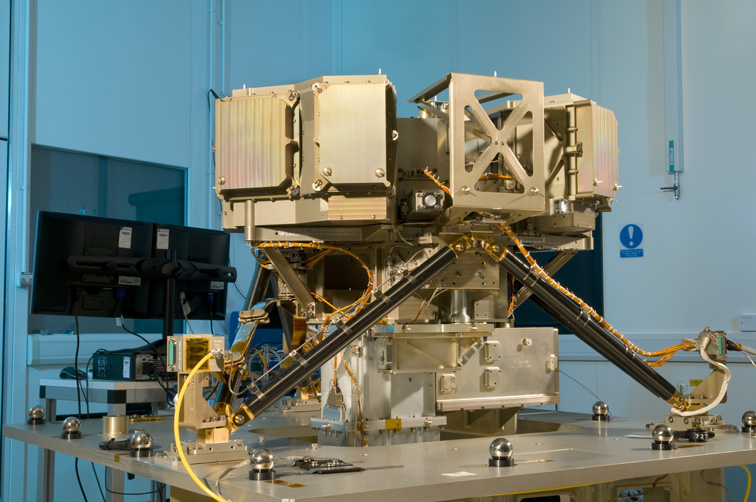|
CE Antliae
CE Antliae (also called TWA 7) is a young low-mass star in the constellation of Antlia. It is surrounded by a debris disk and has one directly imaged planet candidate. TWA 7 was discovered in 1999 with a spectral type of M1 and as a member of the TW Hydrae association. The detection of molecular hydrogen is interpreted as a weak sign of accretion of gas near the star. A giant x-ray flare was detected on 2010-09-07 with MAXI/GSC on the ISS. Planetary system The disk was first imaged in scattered light in 1998 with Hubble NICMOS, but it needed a re-processing in 2016 to reveal the disk. The observation showed a pole-on dust ring with a radius of about 35 astronomical units. An outer ring and a spiral arm originating from the main ring was tentatively detected with VLT/SPHERE in 2018. The modelling also showed evidence of an inner ring. An additional observation with Hubble STIS showed three rings, two spirals and a clump. In 2000 dust was detected around TWA 7 due ... [...More Info...] [...Related Items...] OR: [Wikipedia] [Google] [Baidu] |
Hydrogen
Hydrogen is a chemical element; it has chemical symbol, symbol H and atomic number 1. It is the lightest and abundance of the chemical elements, most abundant chemical element in the universe, constituting about 75% of all baryon, normal matter. Under standard conditions, hydrogen is a gas of diatomic molecules with the chemical formula, formula , called dihydrogen, or sometimes hydrogen gas, molecular hydrogen, or simply hydrogen. Dihydrogen is colorless, odorless, non-toxic, and highly combustible. Stars, including the Sun, mainly consist of hydrogen in a plasma state, while on Earth, hydrogen is found as the gas (dihydrogen) and in molecular forms, such as in water and organic compounds. The most common isotope of hydrogen (H) consists of one proton, one electron, and no neutrons. Hydrogen gas was first produced artificially in the 17th century by the reaction of acids with metals. Henry Cavendish, in 1766–1781, identified hydrogen gas as a distinct substance and discovere ... [...More Info...] [...Related Items...] OR: [Wikipedia] [Google] [Baidu] |
Kelvin
The kelvin (symbol: K) is the base unit for temperature in the International System of Units (SI). The Kelvin scale is an absolute temperature scale that starts at the lowest possible temperature (absolute zero), taken to be 0 K. By definition, the Celsius scale (symbol °C) and the Kelvin scale have the exact same magnitude; that is, a rise of 1 K is equal to a rise of 1 °C and vice versa, and any temperature in degrees Celsius can be converted to kelvin by adding 273.15. The 19th century British scientist Lord Kelvin first developed and proposed the scale. It was often called the "absolute Celsius" scale in the early 20th century. The kelvin was formally added to the International System of Units in 1954, defining 273.16 K to be the triple point of water. The Celsius, Fahrenheit, and Rankine scales were redefined in terms of the Kelvin scale using this definition. The 2019 revision of the SI now defines the kelvin in terms of energy by setting the Bo ... [...More Info...] [...Related Items...] OR: [Wikipedia] [Google] [Baidu] |
Mid-Infrared Instrument
MIRI, or the Mid-Infrared Instrument, is an instrument on the James Webb Space Telescope. MIRI is a camera and a spectrograph that observes mid infrared, mid to long infrared radiation from 5 to 28 microns. It also has coronagraphs, especially for observing exoplanets. Whereas most of the other instruments on Webb can see from the start of near infrared, or even as short as orange visible light, MIRI can see longer wavelength light. MIRI uses silicon arrays doped with arsenic to make observations at these wavelengths. The imager is designed for wide views but the spectrograph has a smaller view. Because it views the longer wavelengths it needs to be cooler than the other instruments (see Infrared astronomy), and it has an additional cooling system. The cooling system for MIRI includes a Pulse tube refrigerator, pulse tube precooler and a Joule–Thomson effect, Joule-Thomson loop heat exchanger. This allowed MIRI to be cooled down to a temperature of 7 kelvins during operations ... [...More Info...] [...Related Items...] OR: [Wikipedia] [Google] [Baidu] |



